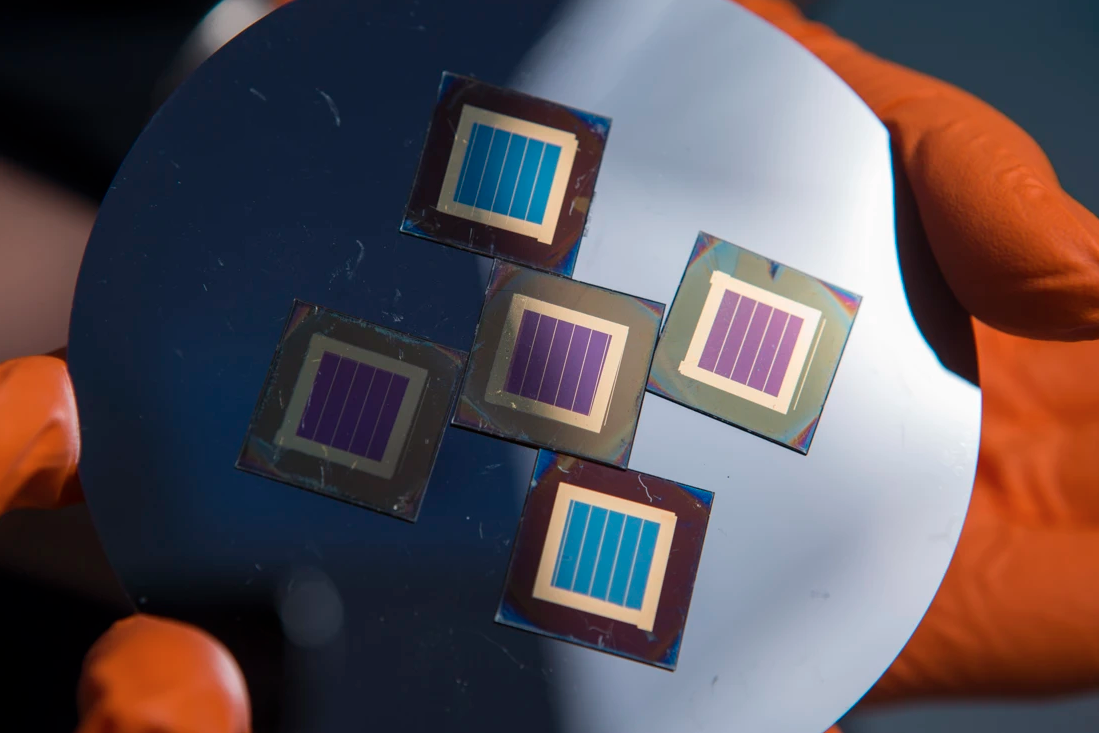A group of researchers at the Australian National University (ANU) has set a new efficiency perovskite-silicon tandem solar cell record while exploring the effect of surface coating versus bulk incorporation of two-dimensional perovskites. As the tandem cells approach the 30% efficiency mark, the ANU researchers hope their achievement will help to improve the technology’s commercial competitiveness.
While silicon solar cells have been omnipresent in the market, perovskites have been, it seems, on the brink of commercialization now for several years, with many leading research institutes taking an interest in their potential to provide a low-cost, high-efficiency alternative. Stacking a perovskite solar cell on top of a silicon cell holds a promise of squeezing more energy out of sunlight due to perovskites’ ability to react to various different wavelengths of light, unlike silicon solar cells that are made only from inorganic materials and can only absorb red light.
As of late, mixed‐dimensional perovskite solar cells combining 3D and 2D perovskites have attracted avid interest owing to improved efficiency and stability. Yet, it remains unclear which method of combining 3D and 2D perovskites works best and ensures to get the best of both worlds. To address this, different strategies of combining 2D perovskites with a 3D perovskite are investigated, namely surface coating and bulk incorporation.
It is found that through surface coating with different aliphatic alkylammonium bulky cations, a Ruddlesden–Popper “quasi‐2D” perovskite phase is formed on the surface of the 3D perovskite that passivates the surface defects and significantly improves the device performance. In contrast, incorporating those bulky cations into the bulk induces the formation of the pure 2D perovskite phase throughout the bulk of the 3D perovskite, which negatively affects the crystallinity and electronic structure of the 3D perovskite framework and reduces the device performance, reads the research published in Advanced Energy Materials.
Using the surface‐coating strategy with n‐butylammonium bromide to fabricate semitransparent perovskite cells and combining with silicon cells in four‐terminal tandem configuration, the ANU researchers have achieved 27.7% tandem efficiency with interdigitated back contact silicon bottom cells (size‐unmatched) and 26.2% with passivated emitter with rear locally diffused silicon bottom cells is achieved in a 1 cm2 size‐matched tandem.
Professor Kylie Catchpole says this would only need to improve slightly – to around 30% – before the technology could be rolled out around the world. “This result demonstrates the potential of tandem solar cells. They can make better use of certain parts of the solar spectrum – for example, high energy blue photons,” he said.
The team is now working on achieving even higher efficiency, as well as further improving the stability of the new solar cells with financial support from the Australian Renewable Energy Agency (ARENA) through the Australian Centre for Advanced Photovoltaics. “The International Technology Roadmap for Photovoltaics predicts tandem solar cells will appear in mass production in 2023, so we’re very close,” lead researcher Dr The Duong said.
In January, a group of scientists at the Helmholtz Zentrum Berlin (HZB) produced a perovskite/silicon tandem cell measured at 29.15% efficiency, a new world record for the technology.
HZB previously held the efficiency record for PS/Si tandem cell efficiency at 25.5%, before UK/Germany based startup Oxford PV pushed further, producing a 28% efficient cell in late 2018. HZB’s new record has been officially certified by Germany’s Fraunhofer ISE, and the group says it will now be targeting the 30% barrier for this technology.
This content is protected by copyright and may not be reused. If you want to cooperate with us and would like to reuse some of our content, please contact: editors@pv-magazine.com.









“Professor Kylie Catchpole says this would only need to improve slightly – to around 30% – before the technology could be rolled out around the world. “This result demonstrates the potential of tandem solar cells. They can make better use of certain parts of the solar spectrum – for example, high energy blue photons,” he said.”
This is interesting and yet some of the papers published on some of the many (Perovskite) chemistries were “tested” under some harsh conditions and during these short term tests, degradation was in the area of 7% or more per year. Right now it seems, longevity has not been tasked by the groups creating these tandems. Long term one might be better off with a 23% mono crystalline cell than a 30% or more tandem perovskite cell if the degradation is way more than crystalline cells. We need to keep in mind, that solar PV adoption is a marathon, not a 50 yard dash.